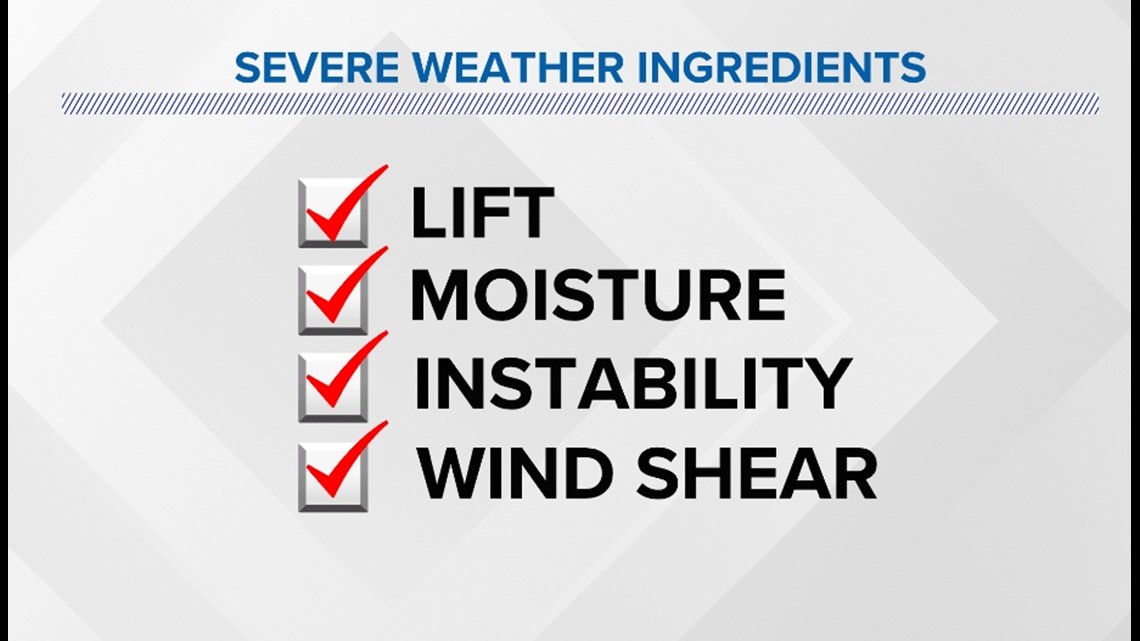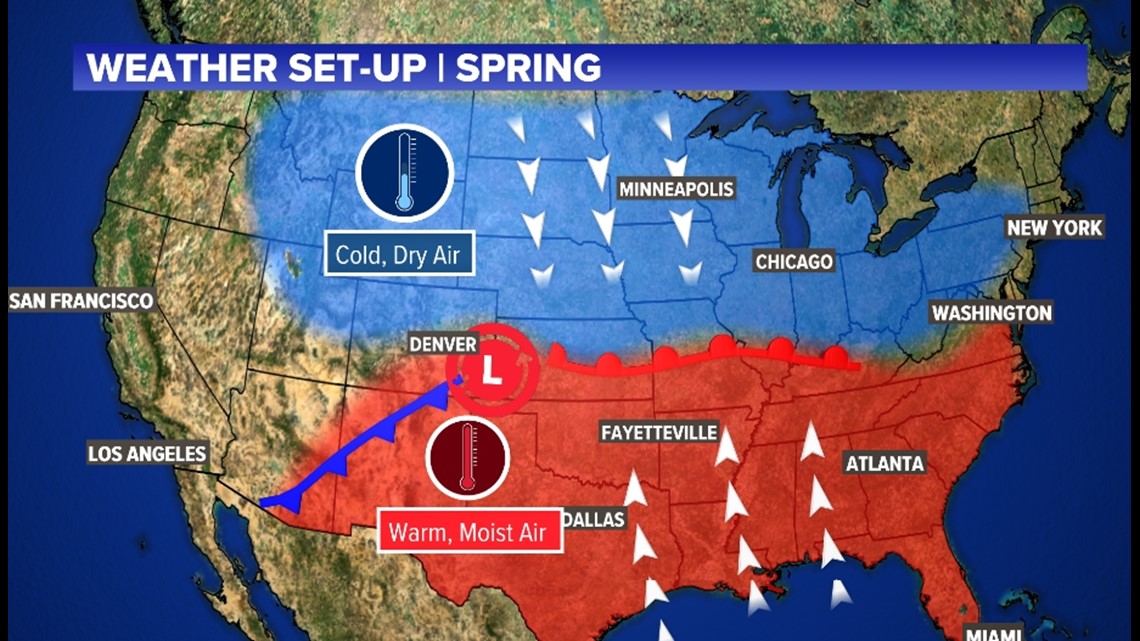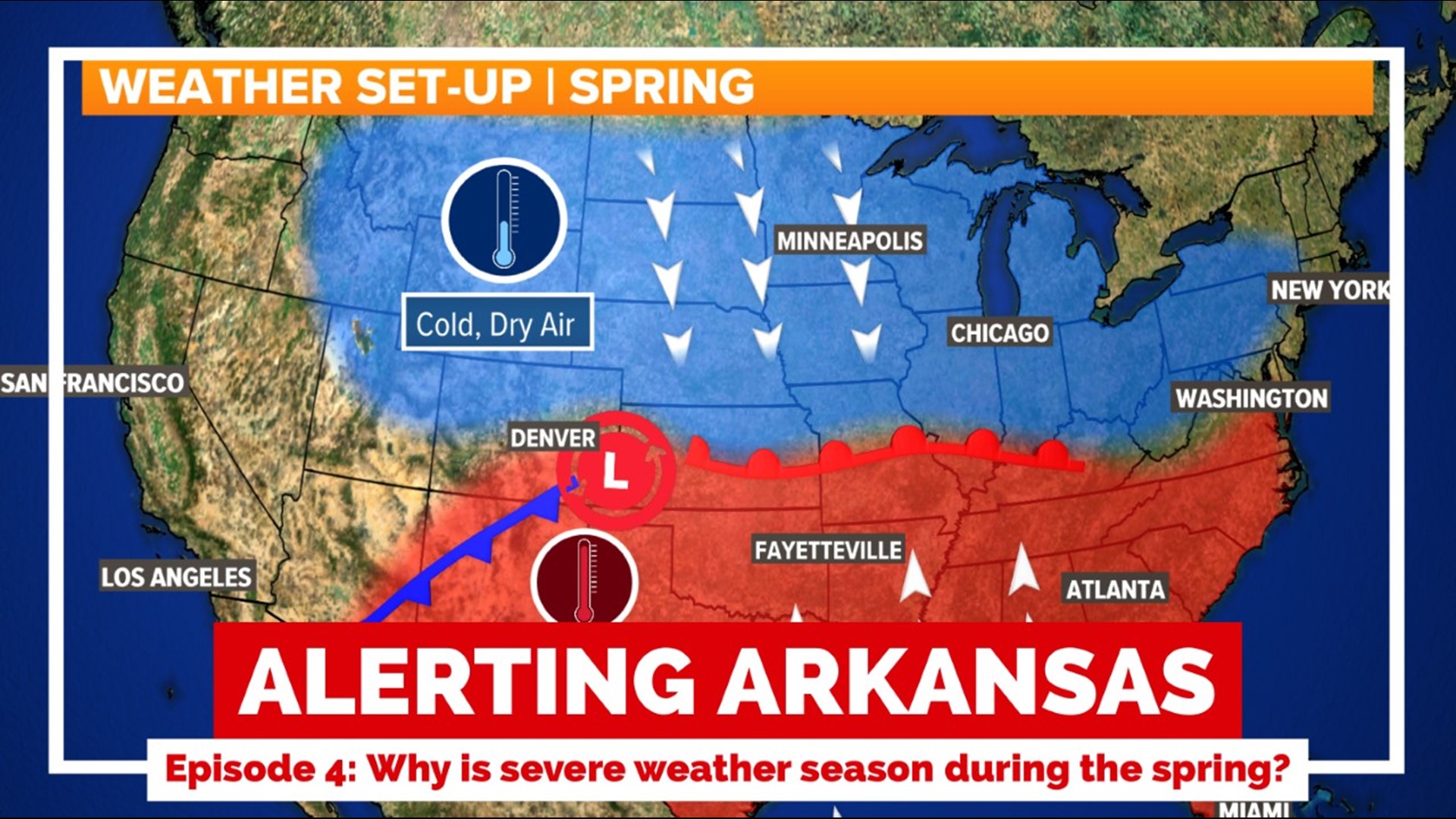Thunderstorms can form any time and any day of the year. Sometimes if there is enough energy in the atmosphere at that time, that thunderstorm could turn strong or even severe.
Why causes a storm to turn severe? And why is the spring time considered “severe weather season”?
During the wintertime, our atmosphere is generally very stable, because all levels of the atmosphere are particularly cold and dry. As we start to go from winter to the spring season, the lower level of the atmosphere starts to warm up and become more humid (more moisture) and that also means the atmosphere starts to become unstable (more instability).
Also during the spring, the days start becoming longer meaning we start to have more sunlight, which means the greater the chance for convection.
The sun heats the ground, which then heats the air directly above the ground. If there is something in the atmosphere to lift that warm air up in the atmosphere, the cold air in layers above starts to push out of the way. As the warm air goes up, the air parcels in that warm layer start to cool, and as that air cools, the water vapor in the air will condense into clouds! With the air unstable and moisture from the water vapor, we have part of a recipe for a thunderstorm.
The greater the temperature difference between a cloud and its surroundings, the faster, higher, and more intense clouds can grow into thunderstorms.


You really need four ingredients for a thunderstorm to turn severe:
- lifting mechanism
- moisture
- instability
- wind shear
Just how powerful a particular storm will become, depends on how extreme those conditions are at that time.
The reason why we see more severe weather during the springtime than any other season is because all of those ingredients (lift, moisture, instability, and wind shear) come together perfectly causing thunderstorms to turn severe.


Let’s put it together. What happens at the beginning of spring is that the warm and moist air starts to push up from the Gulf of Mexico into the Great Plains, so adding moisture and instability. While instability increases, the wind shear starts increase, as well. We still see fronts during the spring time– warm fronts, cold fronts, stationary fronts – which will be the lifting mechanism needed. So when all of that comes together, it’s prime time for severe thunderstorms to form. A long with all the severe weather hazards that come with them – flooding, damaging winds, large hail, and tornadoes.
Areas of the country that typically warm up faster with a combination of a lot of moisture in the air, usually are the areas that see early-season severe thunderstorms.
For states on the Gulf coast, tornado season usually peaks from March through April, while the southern plains peak is around May into June, and the most northern states would be around June or July.
-5NEWS Meteorologist Michelle Trotter
You can find other Alerting Arkansas episodes here:

